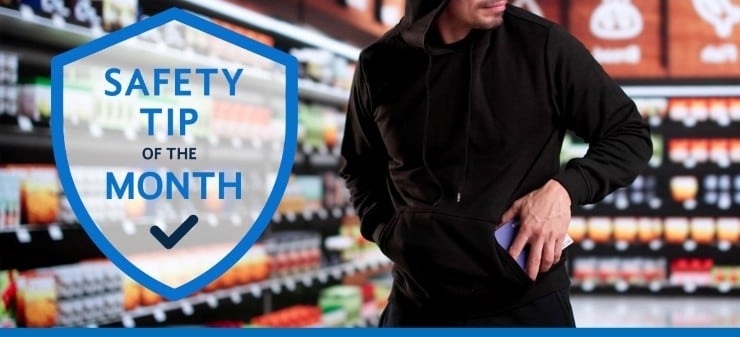If you have merchandise, you have shoplifters. Although some shoplifting may be considered the price of doing business, excessive shoplifting can cut into profits and threaten your bottom line. Businesses have strong motivation to deter shoplifting, but they also need to know how to deal with shoplifters without escalating the situation and risking violence.
Is Shoplifting Increasing?
Recent figures indicate that shoplifting is on the rise. National Retail Federation says shoplifting the average number of shoplifting incidents per year jumped by 93% between 2019 and 2023.
According to Capital One Shopping Research, stores lost approximately $45 billion to retail theft in 2024. If shoplifting rates continue at projected levels, losses could exceed $53 billion in 2027. The average shoplifting incident cost retailers $461.86 in 2020.
The impact is profound. In many areas, stores have started locking up items that are frequently targeted by shoplifters. Although this can deter shoplifting, it can also deter regular shoppers and may decrease sales. According to The Street, retailers of all sizes have closed stores and cited shoplifting as the reason. This includes Target, Walgreens and Kroger locations, as well as small, family-owned shops.
How Often Is Shoplifting Violent?
Not all shoplifters are violent. Many are trying very hard not to be noticed at all. They’re goal is to take what they want without confrontation. However, some shoplifters are bolder, and they may react violently if stopped.
The National Retail Federation says 91% of retailers surveyed believe that shoplifters are exhibiting more violence and aggression compared to 2019. The survey also found that 62% of retailers say it’s become more common for teams of two or three people to work together to steal multiple items, and 76% say that organized retail crime is more of a concern than it was just a year ago.
Although most shoplifting incidents occur without injury, some end in tragedy.
- A Walmart employee in North Carolina was shot and killed after he confronted a man accused of shoplifting, according to WSAZ3. Several employees confronted the shoplifter, who pulled out a gun and shot one of the employees.
- A store employee in South El Monte, California, was run over and killed after trying to stop a shoplifter, according to ABC 7 Eyewitness News. The suspect allegedly asked an employee at a discount store for a $10 box of masks and then took them without paying. The employee followed the suspect into the parking lot, where the accused shoplifter met up with two other men who attacked the employee. They ran over the employee twice before driving away.
- A grocery store worker in Manhattan was killed while trying to stop a shoplifter, according to CBS News. The worker confronted a shoplifter who was reportedly trying to steal a case of beer. The employee was fatally injured in a struggle that ensued.
Protecting Your Employees
Employees sometimes want to stop shoplifters because they believe it is the right thing to do. However, it can be impossible to know which shoplifters will turn violent when confronted, and even shoplifters who do not appear intimidating may have weapons or accomplices.
Instead of encouraging employees to confront shoplifters, and instead of leaving it up to the individual employee, many stores have adopted non-confrontation policies. Under these policies, instead of confronting shoplifters, employees document and report incidents so they can be handled by security or police.
See our tip sheet for more tips on how to handle shoplifters without escalating the situation.


